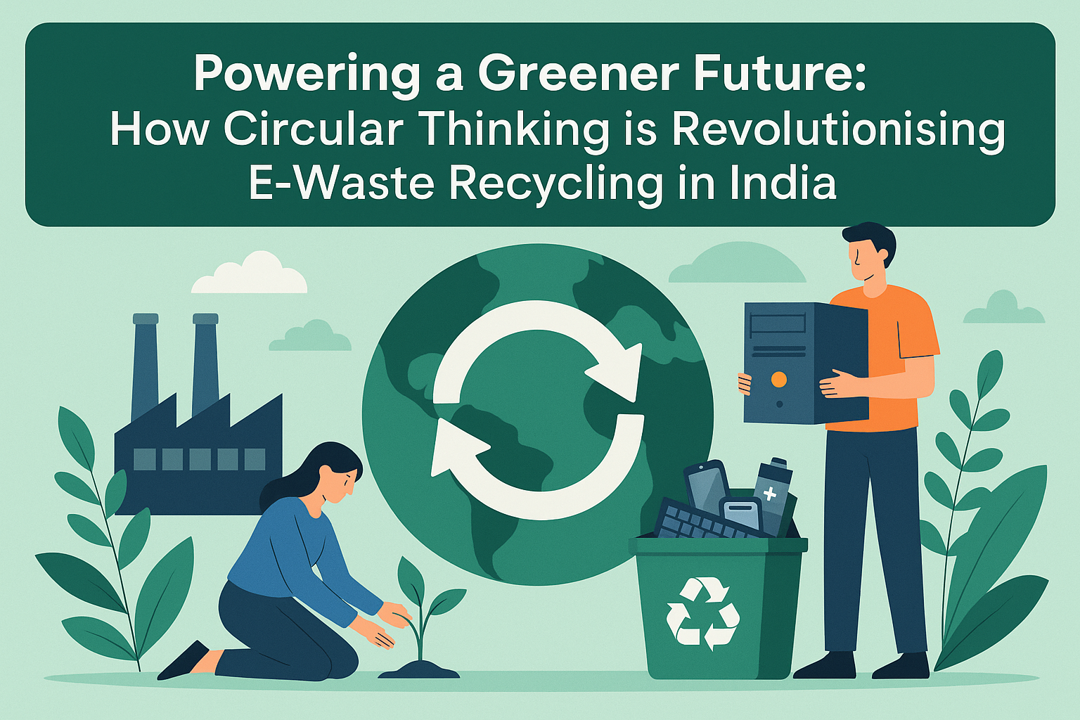For decades, the business model was simple: Take, Make, Dispose. This linear approach created unprecedented growth but also generated massive waste and strained natural resources. Now, a powerful new paradigm is emerging: the Circular Economy.
It’s a shift from a disposable mindset to one where products are designed to last, be reused, repaired, and eventually regenerated. Far from being just an environmental ideal, the circular economy is becoming a major economic opportunity, driven by changing consumer values and resource realities. For businesses in India, understanding this shift is key to building a resilient and profitable future.
Why the Shift Towards Circularity Now?
Several forces are converging to make the circular economy a business imperative in India:
- The Conscious Consumer: A significant and growing segment of Indian consumers, particularly younger generations, are actively seeking sustainable products. They are aware of environmental issues and are willing to support brands that align with their values. 💚
- Resource Scarcity & Cost: The linear model relies on cheap, abundant resources. As raw material costs rise and supply chains face disruption, businesses are realizing the economic benefits of resource efficiency and waste reduction. 💰
- Government Push & Policy: Initiatives like Extended Producer Responsibility (EPR) and potential regulations around waste management are encouraging companies to rethink product lifecycles. 📜
Unlocking the Opportunity: Key Consumer Insights
While the desire for sustainability is growing, success requires understanding the nuances of the Indian consumer:
- Value Proposition is Key: While many consumers say they prefer sustainable products, purchase decisions are still heavily influenced by price and perceived value. Brands must clearly communicate the benefits of circularity (e.g., durability, long-term cost savings) beyond just environmental goodwill.
- Trust and Transparency Matter: Consumers are wary of “greenwashing.” Brands need to be transparent about their circular practices and provide credible proof of their sustainability claims (e.g., certifications, traceable materials). ✅
- Convenience is Crucial: Circular models often require consumer participation (e.g., returning old products, opting for refills). These processes must be incredibly simple and convenient to ensure widespread adoption. 🔄
The Role of Market Research in Your Circular Strategy
Transitioning to a circular model involves significant strategic shifts. Market research is essential to navigate this change effectively:
- Understanding Consumer Demand: What specific sustainable features are your customers willing to pay a premium for? Which product categories have the highest potential for circular models?
- Testing New Concepts: Before investing heavily in redesigning products or launching take-back programs, use market research to test consumer acceptance and identify potential barriers.
- Measuring Impact & Communication: How do you effectively communicate your circularity efforts to build brand trust and differentiate yourself from competitors? Research helps craft the right message.
Navigate the Circular Shift with McKinley Research
Building a successful circular business model requires deep insights into consumer attitudes, market dynamics, and operational feasibility. At McKinley Research, we specialize in providing the data-driven intelligence you need to make this transition confidently.
We help you understand the specific opportunities and challenges of implementing circular economy principles within the unique context of the Indian market. From initial concept testing to measuring the impact of your sustainability initiatives, we provide the clarity you need to build a business that is both profitable and purposeful.


